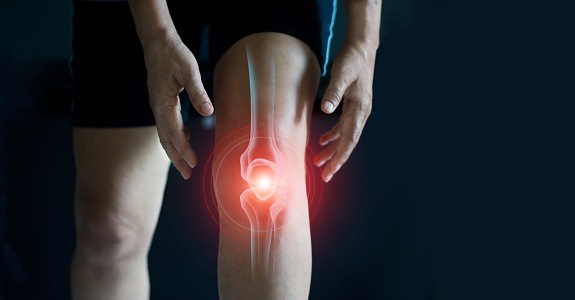
Patients with mild radiographic osteoarthritis (OA) of the knee who use non-steroidal anti-inflammatory drugs (NSAIDs) and do not meet physical activity guidelines are at risk of radiographic progression, according to a study published in Arthritis Research & Therapy.
“While risk factors for incident knee OA are well understood, risk factors for radiographic OA progression are less known and evidence is frequently conflicting,” the study authors explained.
They performed a longitudinal study within the “Long-term Evaluation of Glucosamine Sulfate” (LEGS study) randomized, controlled trial. Between 2007 and 2009, they recruited patients with chronic knee pain (≥4/10) and medial tibiofemoral narrowing (but retaining >2mm medial joint space width) on radiographs.
Of 605 patients recruited, 498 had available follow-up data. The mean age was 60 years. Baseline assessments included pain, physical function, NSAID use, statin use, not meeting physical activity guidelines, presence of Heberden’s nodes, history of knee surgery/trauma, and manual occupation. Analyses were adjusted for age, sex, obesity, high blood pressure, allocation to glucosamine and chondroitin treatment, and baseline structural disease severity (Kellgren and Lawrence grade, joint space width, and varus alignment). The most recent available follow-up was used to determine radiographic OA progression, defined as joint space narrowing ≥0.5mm over one to two years.
NSAID Use, Physical Activity Correlated with Radiographic Progression
About half of the study group was obese, and the cohort had a mean comorbidity score of 3.2. The authors described the population as “relatively healthy”; among the common comorbidities were back pain (38%), high blood pressure (33%), depression (16%), heart disease (11%), and diabetes (6%).
At baseline, all patients reported pain; at follow-up, 87% of patients did.
Overall, 58 patients (12%) sustained radiographic OA progression: 47 patients who were evaluated at year 2 and 11 patients who were evaluated at year 1. Univariate analysis identified NSAID use, inadequate physical activity, and high baseline pain as clinical factors eligible for inclusion in the multivariable model.
In adjusted analyses, the only predictors of radiographic OA progression were NSAID use at baseline (odds ratio [OR], 2.05; 95% confidence interval [CI], 1.10-3.84) and not meeting physical activity guidelines (OR, 2.07; 95% CI, 0.92-4.68).
The most common NSAIDs among those who used them were aspirin (35%), meloxicam (24%), ibuprofen (16%), and diclofenac (12%). There were not enough data to conduct analyses of each NSAID class separately, but analyses were conducted in NSAID use without aspirin. In these adjusted analyses, patients who used NSAIDs—excluding aspirin—at baseline had higher odds of radiographic OA progression (OR, 2.27; 95% CI, 1.15-4.46).
“Meeting physical activity guidelines should be encouraged among people with symptomatic knee OA with mild structural disease severity, as this may be protective in the risk of radiographic OA progression over 1 to 2 years. Clinicians, and people with knee OA, need to be aware of the increased risk of progression among people who use NSAIDs,” the researchers recommended in their conclusion. “Interventions targeting the prevention of radiographic OA progression are likely to be most effective during the early stage of knee OA, when only mild features are evident on radiographs.”







 © 2025 Mashup Media, LLC, a Formedics Property. All Rights Reserved.
© 2025 Mashup Media, LLC, a Formedics Property. All Rights Reserved.